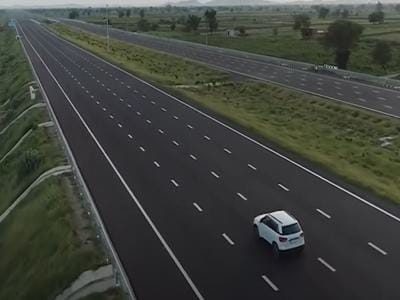Pune Bengaluru Expressway

Pune Bengaluru Expressway to Launch by 2028: Faster Travel and Regional Growth Ahead
Pune, 20 June 2025: A transformative chapter in India’s infrastructure journey is about to unfold with the construction of the Pune Bengaluru Expressway, a six-lane, high-speed corridor that promises to reduce travel time from 15 hours to just 6-7 hours. Scheduled for completion by 2028, this ambitious project is set to change how India connects its southern and western regions, significantly enhancing trade, logistics, and travel convenience.
A Game-Changer in Interstate Travel
The Pune to Bengaluru Expressway 2028 project is valued at approximately ₹50,000 crore and spans close to 700 kilometers. The expressway will begin at Kanjle in Maharashtra and end at Bommanal in Karnataka, passing through 12 key districts including Pune, Satara, Sangli, Belagavi, Bagalkot, Koppal, and Tumakuru.
By trimming nearly 95 kilometers off the current NH-48 route, the new corridor will enable vehicles to cruise at speeds of up to 120 km/h, slashing current travel durations by more than half. This mega project not only enhances connectivity but also redefines comfort, safety, and efficiency in long-distance road travel.
Strategic Importance and National Vision
Approved under Phase II of the Bharatmala Pariyojana, the expressway is aligned with India’s broader goal of establishing a seamless Delhi–Chennai expressway corridor. This corridor will drastically improve freight movement, reduce logistic costs, and support supply chain efficiencies across the nation.
The Detailed Project Report (DPR) for the new Pune Bengaluru Expressway was jointly approved by the Maharashtra and Karnataka governments in February 2025. Central clearance is expected by mid-2025, with rapid construction milestones laid out to meet the 2028 deadline.
Technologically Advanced and Environmentally Friendly
The Pune Bengaluru Expressway update confirms that the corridor will incorporate state-of-the-art technologies to ensure smooth, secure, and smart travel. Key features will include:
- Smart toll collection systems
- CCTV surveillance for security
- Electronic speed monitoring
- Drone-based infrastructure mapping
- Quick-response emergency systems
In addition, wildlife crossings and comprehensive environmental safeguards will be integrated to reduce ecological disruption and protect biodiversity along the route. This holistic approach makes it one of India’s most eco-conscious expressways.
Industrial Growth and Real Estate Development
Experts predict that the new Pune Bengaluru Expressway will be a major catalyst for economic development in regions like Satara, Sangli, and Tumakuru. These areas are expected to witness a surge in real estate activity, industrial investment, and employment opportunities as connectivity improves.
Logistics parks, warehousing hubs, and automotive corridors are likely to spring up along the expressway, creating a fertile ground for start-ups, small businesses, and multinational companies alike.
The corridor is also expected to stimulate regional tourism, particularly in Maharashtra’s cultural belt and Karnataka’s heritage towns, offering new avenues for economic diversification.
Key Benefits at a Glance
Here’s why the Pune to Bengaluru Expressway 2028 is a landmark project for India:
- Drastic Reduction in Travel Time: From 14–15 hours to just 6–7 hours.
- High-Speed Travel: Designed for speeds up to 120 km/h with advanced road engineering.
- Boost to Trade: Part of the Delhi-Chennai industrial corridor plan to enhance freight logistics.
- Economic Impact: Drives growth in real estate, manufacturing, and logistics sectors.
- Eco-Friendly Design: Focus on sustainability with wildlife crossings and environmental planning.
- Smart Infrastructure: Features smart tolling, emergency systems, and real-time surveillance.
Government and Public Support
Backed by both state and central governments, the Pune Bengaluru Expressway has garnered widespread public support. The project resonates with the Make in India and Atmanirbhar Bharat missions, underlining India’s capability to deliver world-class infrastructure.
Urban planners and policy experts consider this project to be a blueprint for future expressways, combining technological innovation, sustainability, and economic foresight.
Project Timeline and Next Steps
Here is a quick look at the current status and upcoming milestones for the Pune Bengaluru Expressway update:
- February 2025: DPR approved by Maharashtra and Karnataka governments
- Mid-2025: Central government clearance anticipated
- 2026-2027: Major construction and land acquisition
- By 2028: Targeted project completion and public opening
Authorities are also exploring the possibility of extending metro rail networks and bus connectivity to expressway access points, further enhancing multimodal transportation across the region.
A New Era in Indian Highways
The new Pune Bengaluru Expressway is more than just a road—it represents a vision for a smarter, faster, and more connected India. It is a vital link in India’s push toward world-class infrastructure and integrated economic zones. Upon completion, it is expected to not only redefine regional mobility but also improve the quality of life for millions of people in both Maharashtra and Karnataka.
From weekend travellers to long-haul transporters, everyone stands to benefit from this expressway, which embodies the future of Indian expressway networks.
Conclusion
The Pune Bengaluru Expressway, with its planned launch in 2028, is set to become a flagship infrastructure initiative in India. With fast travel, economic growth, and eco-friendly design at its core, this expressway symbolizes the nation’s infrastructure evolution. Whether you are a frequent traveller, a logistics player, a real estate investor, or simply a citizen watching India rise, this expressway has something to offer you.
Stay tuned for more Pune Bengaluru Expressway updates as India moves closer to unveiling one of its most transformative infrastructure marvels.
